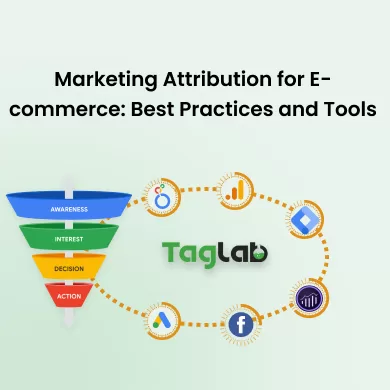Your cart is currently empty!
Search results for:
Cost per Sale (CPS) Metric Definition
Cost per Sale (CPS) measures the cost incurred to generate each sale through advertising and marketing efforts. This metric is essential for understanding the efficiency of marketing spend, particularly in e-commerce and direct sales campaigns. A low CPS indicates cost-effective sales generation, while a high CPS suggests a need to optimize targeting, ad creative, or…
Cost per Order (CPO) Metric Definition
Cost per Order (CPO) measures the average cost incurred to generate each customer order through advertising and marketing efforts. This metric is essential for understanding the efficiency of campaigns focused on driving direct purchases or transactions. A low CPO indicates cost-effective order generation, while a high CPO suggests the need for optimizing targeting, ad creatives,…
Cost per Download (CPD) Metric Definition
Cost per Download (CPD) measures the average cost incurred to generate each app or digital asset download through advertising and marketing efforts. This metric is essential for app developers and digital marketers focusing on user acquisition. A low CPD indicates efficient spending, while a high CPD suggests a need to optimize targeting or ad creatives.…
Cost per Signup (CPSU) Metric Definition
Cost per Signup (CPSU) measures the average cost incurred to acquire each user signup through advertising and marketing efforts. This metric is essential for subscription-based services, SaaS companies, and lead generation campaigns, as it provides insight into the efficiency of acquisition spending. A low CPSU indicates cost-effective user acquisition, while a high CPSU suggests a…
Effective Cost per Action (eCPA) Metric Definition
Effective Cost per Action (eCPA) measures the actual cost incurred for each desired action, such as a purchase, sign-up, or download, after bid adjustments and optimization strategies. eCPA is essential for performance-based marketing campaigns, as it provides a realistic view of campaign efficiency. A low eCPA indicates cost-effective acquisition, while a high eCPA suggests a…
Return on Marketing Investment (ROMI) Metric Definition
Return on Marketing Investment (ROMI) measures the revenue generated from marketing activities relative to the marketing expenses. This metric is crucial for understanding how effectively marketing spend drives profit, helping businesses optimize budget allocation and improve campaign effectiveness. A high ROMI indicates that marketing efforts yield profitable returns, while a low ROMI may indicate a…
Customer Segmentation Accuracy Metric Definition
Customer Segmentation Accuracy measures how precisely a business can group its customers based on shared characteristics or behaviors. It helps businesses understand their customer base better, allowing for more personalized marketing strategies and improved customer experience. Higher accuracy in segmentation leads to better targeting, increased customer satisfaction, and optimized marketing campaigns. Detailed Explanation What is…
Marketing Attribution for E-commerce: Best Practices and Tools
Marketing attribution is the process of identifying and assigning credit to the different marketing touchpoints that a customer interacts with before making a purchase. In simpler terms, it helps e-commerce businesses understand which marketing channels—such as social media, email, paid ads, or organic search—contribute to driving sales. This understanding is crucial because, in the typical…
Data Collection Methods
Data Collection Methods refer to the systematic approaches used to gather information and data for analysis. These methods are essential in research and analytics, allowing organizations to obtain the necessary data to inform decision-making, understand trends, and enhance products or services. The choice of data collection method depends on the research objectives, the type of…
Customer Insights
Customer Insights refer to the actionable information derived from analyzing customer data, behavior, preferences, and feedback. These insights help businesses understand their customers on a deeper level, enabling them to tailor products, services, and marketing strategies to better meet customer needs and expectations. By leveraging customer insights, organizations can enhance customer satisfaction, increase engagement, and…
